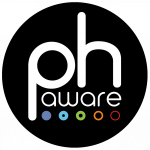Phaware Podcast: Tilman Humpl, MD

This podcast series, created and produced by phaware, is being offered as a regular guest feature on Pulmonary Hypertension News to bring the voices and life experiences of PH patients, family members, caregivers, healthcare specialists, and others to our readers. You may listen to the podcast directly, or read it via the transcript that runs below.
I’m Aware That I’m Rare: Tilman Humpl, MD
The phaware™ interview
Tilman Humpl, MD, is the Director of the Pulmonary Hypertension Service at the Hospital for Sick Children in Toronto, which is part of the Pediatric Pulmonary Hypertension Network (PPHNet). One focus of Humpl’s clinical work is the management of children on a ventricular assist device. As the director of the Pulmonary Hypertension Service at the Hospital for Sick Children, he runs an outpatient clinic with referrals from several Canadian provinces. He discusses his contribution to the Pediatric Pulmonary Hypertension Guidelines.
I’m Tilman Humpl. I work at the Hospital for Sick Children in Toronto. I’m a pediatric cardiologist with a main focus on critical care. Pediatric cardio-critical care and pulmonary hypertension in children.
I think in pediatrics for a long time we had no guidelines at all. We were following the adult world where there’s less patients in pediatrics, so a  lot of centers started later than the adult centers and we were always in cross-talks, but we never managed to get one single platform together. And I think over the past … it started almost 10 years ago, there was am [attempt] of getting things together and really getting everybody — from the neonatologist to the cardiologist to the intensive care doctor to the lung doctors — together and establish something for discussions also in the future.
lot of centers started later than the adult centers and we were always in cross-talks, but we never managed to get one single platform together. And I think over the past … it started almost 10 years ago, there was am [attempt] of getting things together and really getting everybody — from the neonatologist to the cardiologist to the intensive care doctor to the lung doctors — together and establish something for discussions also in the future.
Yeah, the very first patient I saw with pulmonary hypertension was 20 years ago in Germany and this was a patient who was put on prostacyclin, the only medication available at that time, and I think since early 2000 having now different medications available really changed the field dramatically. So, not only the intravenous medication with a very short half-life, but also now oral medications that can be combined and make the patient better or actually postpone the use of intravenous medication.
I worked on the critical care business of the guidelines and also a small contribution in the mechanical support part of the guidelines. We see, fortunately not a lot of pulmonary hypertension anymore in the postoperative phase, maybe [we] don’t look in too much detail anymore. But 20 years ago it was almost 20 to 30 percent of patients who had some element of pulmonary hypertension. Nowadays, we see it a little bit less, but if we see it, it’s profound and then we have to have some guidelines how to deal with these events of pulmonary hypertension and one of the possibilities, for example, is to give inhaled nitric oxide (iNO) or switch over to an oral drug if the pulmonary hypertension [still exists].
I think therefore the whole field, not only for doctors who are not working in pulmonary hypertension, but also for physicians who are working with pulmonary hypertension, but maybe in smaller centers, maybe who are trying to develop a pulmonary hypertension program. But also for larger centers to unify a little bit more the approach in how you diagnose, in how you treat and you follow-up on pulmonary hypertension, because there were also a lot of differences all over North America, but certainly all over the world. And it’s not only that North America is looking at these guidelines, but I think also other countries in the world looking at these guidelines, as well.
I think compared to 10 or 15 years ago, the gap is getting smaller because I think, or let’s say 20 years ago, pulmonary hypertension was a disease that nobody wanted to deal with and you may or may not have seen in the life of a physician. You may have seen one or zero patients, but now I think physicians or even general practitioners, family physicians are much more aware of the disease and over the 10 years I got much more referrals than compared to five to eight years earlier of patients just to rule out pulmonary hypertension. [That’s] because I think it’s getting more and more on every doctor’s mind to also not just think it’s asthma or it’s something else, but [diagnosing] pulmonary hypertension.
We had one patient in Toronto that was moved around to different physician’s offices and at the end was diagnosed with pulmonary hypertension and this patient made it to the front page of the local newspaper. I think after that the increase of referrals from the Toronto area was really substantial. It’s slowed down a little bit, but I think given these new drugs in the publications, like the guidelines, it’s more and more in the mindset of physicians.
EVERYBODY HAS A STORY. WHAT’S YOURS?
phaware wants to share your pulmonary hypertension story with their engaged global audience. Whether you are a patient, caregiver, or medical professional, they are enlisting PH community members from across the globe. Visit www.phaware.global/podcast to share your story and to be considered for a future episode. Learn more about pulmonary hypertension at www.phaware.global. #phaware #phawarepod

Note: Pulmonary Hypertension News is strictly a news and information website about the disease. It does not provide medical advice, diagnosis, or treatment. This content is not intended to be a substitute for professional medical advice, diagnosis, or treatment. Always seek the advice of your physician or other qualified health provider with any questions you may have regarding a medical condition. Never disregard professional medical advice or delay in seeking it because of something you have read on this website. The opinions expressed in this column are not those of Pulmonary Hypertension News or its parent company, Bionews Services, and are intended to spark discussion about issues pertaining to pulmonary hypertension.









Leave a comment
Fill in the required fields to post. Your email address will not be published.